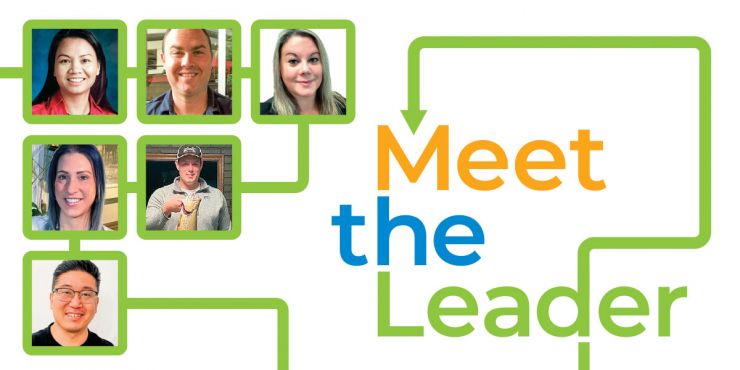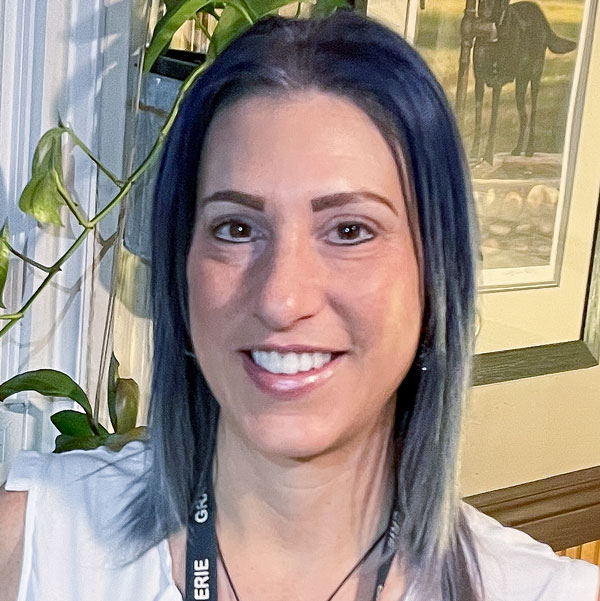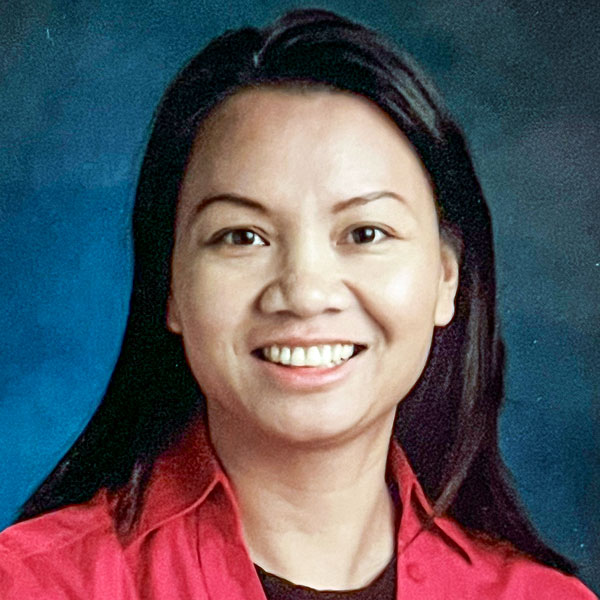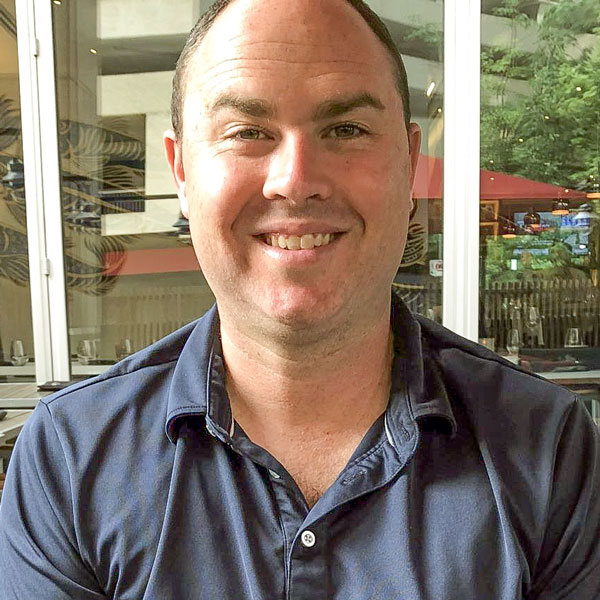
In Meet the Leader, Grand Erie’s newest principals and vice-principals share their story and leadership philosophy.

A: ‘Learn’ emphasizes the importance of lifelong learning. It suggests a mindset that seeks knowledge, skills, and experiences throughout one's life. ‘Lead’ makes me think of responsibility, which implies a sense of responsibility for our actions and decisions, as well as a commitment to guiding others toward shared goals.
‘Inspire’ points me to motivation, which involves igniting a sense of purpose and passion in myself and others. Together, "learn, lead, and inspire" echoes a holistic approach to success. It’s a chain where continuous learning drives effective leadership, and in turn, becomes a source of inspiration for others. Jack Welch coined it best, and this is something I absolutely believe: “When you were made a leader you weren't given a crown, you were given the responsibility to bring out the best in others.”

A: Recently, Bellview has been experiencing a lot of growth and we have received a lot of student enrollments. We are very fortunate to have students join us from a variety of cultures, backgrounds, and experiences.
I feel our community is special because we are given a unique opportunity to both learn and celebrate our rich cultural diversity of all our diverse families and students.

A: My journey to become a school leader started with my parents giving up everything they had, including their wedding rings and risking their lives to get on a little boat. We were the lucky ones among the “Vietnamese boat people” who survived and were displaced in various refugee camps in Hong Kong and China. My parents organized starvation protests so that my siblings and I, among other children, could go to school. It was in a classroom with Mrs. Mann, my first English teacher, who ignited the fire of learning in me. She gave me hope and a vision of a better world.
Coming to Canada at the age of 12, schooling was not easy, but I learned to be resilient. I was fortunate to have the support of many educators in my elementary and secondary years in Grand Erie. I am grateful for my colleagues who took the time to get to know me, supported me and continue to be my mentor until today.
Equity and inclusion are key values that guide my education career. It is this belief and passion that motivated me to initiate and maintain the leadership position of the chair of the Social Justice committee for Grand Erie Teachers Federation for 20 years. The common thread throughout my career has been supporting students to reach their full potential while creating a sense of belonging and community for them. Two years ago, while covering an unfilled supply teaching position, my former students reminded me of the importance of representation and that they want me to be their principal. Now that I am a Vice-Principal, I can remind my students that no matter what their situation in life, they must be their authentic selves and to use their voice to advocate for themselves and for those who feel voiceless. This creates an inclusive environment where ideas and perspectives are diverse, and everyone feels valued.


A: I think what makes Grand Erie special is that we have many of the advantages of a large, modern school board but have maintained strong, deeply rooted connections to the communities we serve.
Despite only being in my new role for a short period of time, it’s evident how much Delhi Public School and Waterford Public School mean to families and how dedicated the teaching staff are to meeting the needs of their students.

A: I have two individuals who have made the biggest impact on my leadership journey: Superintendent Julie White and Principal Leader of School Culture and Well-Being, Jessie Hooper.
Previous administrators had discussions with me about going into Administration and about how my strengths fit with the role. While I had given some consideration into taking the path towards Administration, I became more focused on other aspects of my career. It wasn’t until Julie White, when she was Principal Leader of Specialized Services, talked to me about my leadership path that I started to honestly consider Administration. Julie is a phenomenal leader who supports and inspires everyone in her department. She reinspired my leadership path by being an amazing and supportive leader herself.
For the last year, Jessie Hooper has been my mentor, and I wouldn’t have reached the role of Vice-Principal without her encouragement, guidance and leadership. For me, Jessie Hooper embodies Grand Erie District School Board’s motto of Learn, Lead, and Inspire.
Good Food Adds Up to Good Learning at Courtland Pubic School
Evidence suggests that breakfast and snack programs in schools:
- Improves children’s school performance, memory and test grades
- Enhances students’ physical, emotional, social and intellectual development
- Increases attendance rates, particularly for nutritionally at risk children
- Provides additional time for children to eat and drink nutritious breakfasts and snacks
- Provides energy for students to be more physically
- Enhances nutritional status of students by replacing the consumption of foods with low nutritional value with more nutritious choices, such as more vegetables and fruit
- Promotes a sense of community by bringing people together to ensure all children are well-nourished
- Leads to better dietary habits by increasing the frequency of eating breakfast
- Reduces the prevalence of vitamin and mineral deficiencies
With the generous support of the Child Nutrition Network and the Grand Erie District School Board, the school was able to renovate a room in the school into a nutrition program kitchen. Funds provided by the Child Nutrition Network and school fundraising monies purchase the good food and materials needed to run the program.
Every morning at 8 a.m., parent volunteers and their children arrive to prepare and distribute the food for the day. This program would not happen without their enthusiastic support.
Each serving of food includes a dairy product (i.e. yogurt, cheese string), a grain product (i.e. crackers, mixed cereal, muffin, whole wheat bun) and a fruit product (i.e. apple, banana, clementine orange, grapes, juice) or a vegetable product (i.e. cucumber slices, raw carrots). A container filled with food is delivered to each classroom and as children get settled for a day of learning, staff and students are encouraged to help themselves to a delicious and nutritious start to the day.
“Nutrition programs, such as the one at Courtland Public School, are happening in many schools within the Grand Erie District School Board. It’s a huge effort supported by the Board, volunteers and community agencies. Working together, it’s amazing what can be done. We feel most grateful to have this opportunity for our Courtland school community”, says principal Deb Opersko.
Roots of Empathy
Courtland Public School offers the Roots of Empathy program in our Kindergarten A classroom. Our Early Childhood Educator, Mrs. L. Wildman is a trained Roots of Empathy instructor. Our Roots of Empathy baby and her mom are welcome visitors to the classroom.
An explanation of program, from the Roots of Empathy website is included below:
Roots of Empathy is an evidence-based classroom program that has shown significant effect in reducing levels of aggression among schoolchildren by raising social/emotional competence and increasing empathy. The program reaches elementary schoolchildren from Kindergarten to Grade 8. In Canada, the program is delivered in English and French and reaches rural, urban, and remote communities including Aboriginal communities. Roots of Empathy is also delivered in New Zealand, the United States, Isle of Man, the Republic of Ireland, Northern Ireland and Scotland.
Emotional Literacy
At the heart of the program are a neighbourhood infant and parent who visit the classroom every three weeks over the school year. A trained Roots of Empathy Instructor coaches students to observe the baby's development and to label the baby's feelings. In this experiential learning, the baby is the "Teacher" and a lever, which the instructor uses to help children identify and reflect on their own feelings and the feelings of others. This "emotional literacy" taught in the program lays the foundation for more safe and caring classrooms, where children are the "Changers". They are more competent in understanding their own feelings and the feelings of others (empathy) and are therefore less likely to physically, psychologically and emotionally hurt each other through bullying and other cruelties. In the
Roots of Empathy program children learn how to challenge cruelty and injustice. Messages of social inclusion and activities that are consensus building contribute to a culture of caring that changes the tone of the classroom. The Instructor also visits before and after each family visit to prepare and reinforce teachings using a specialized lesson plan for each visit. Research results from national and international evaluations of Roots of Empathy indicate significant reductions in aggression and increases in pro-social behaviour.


